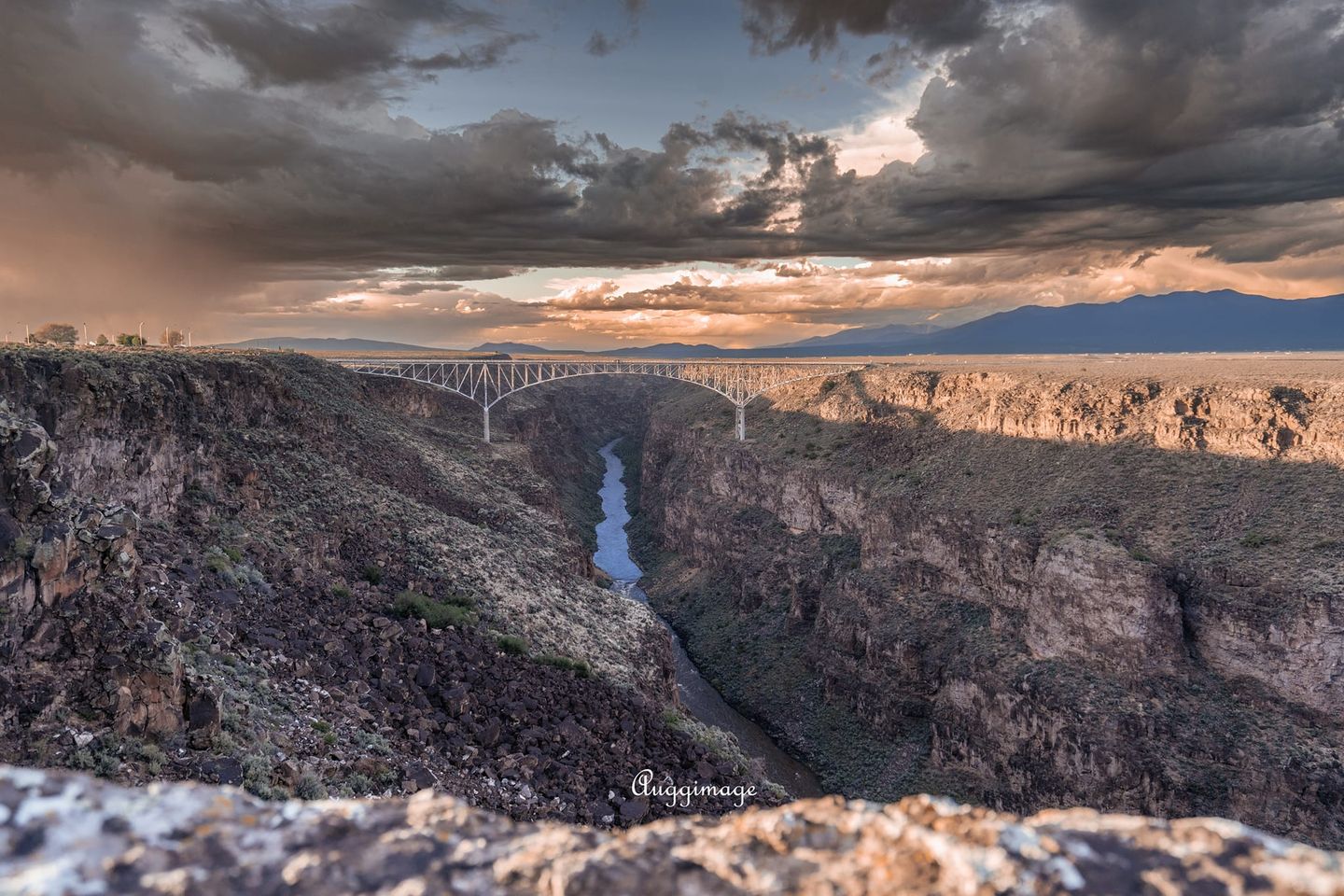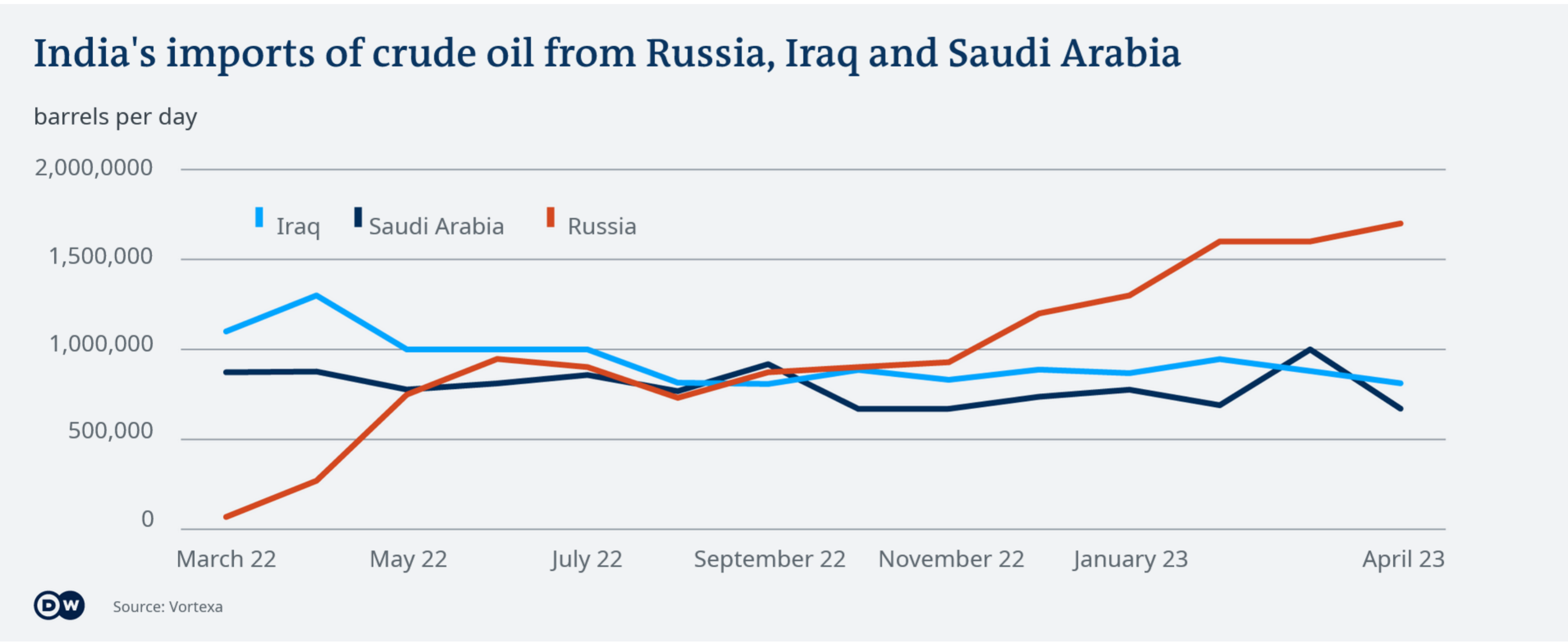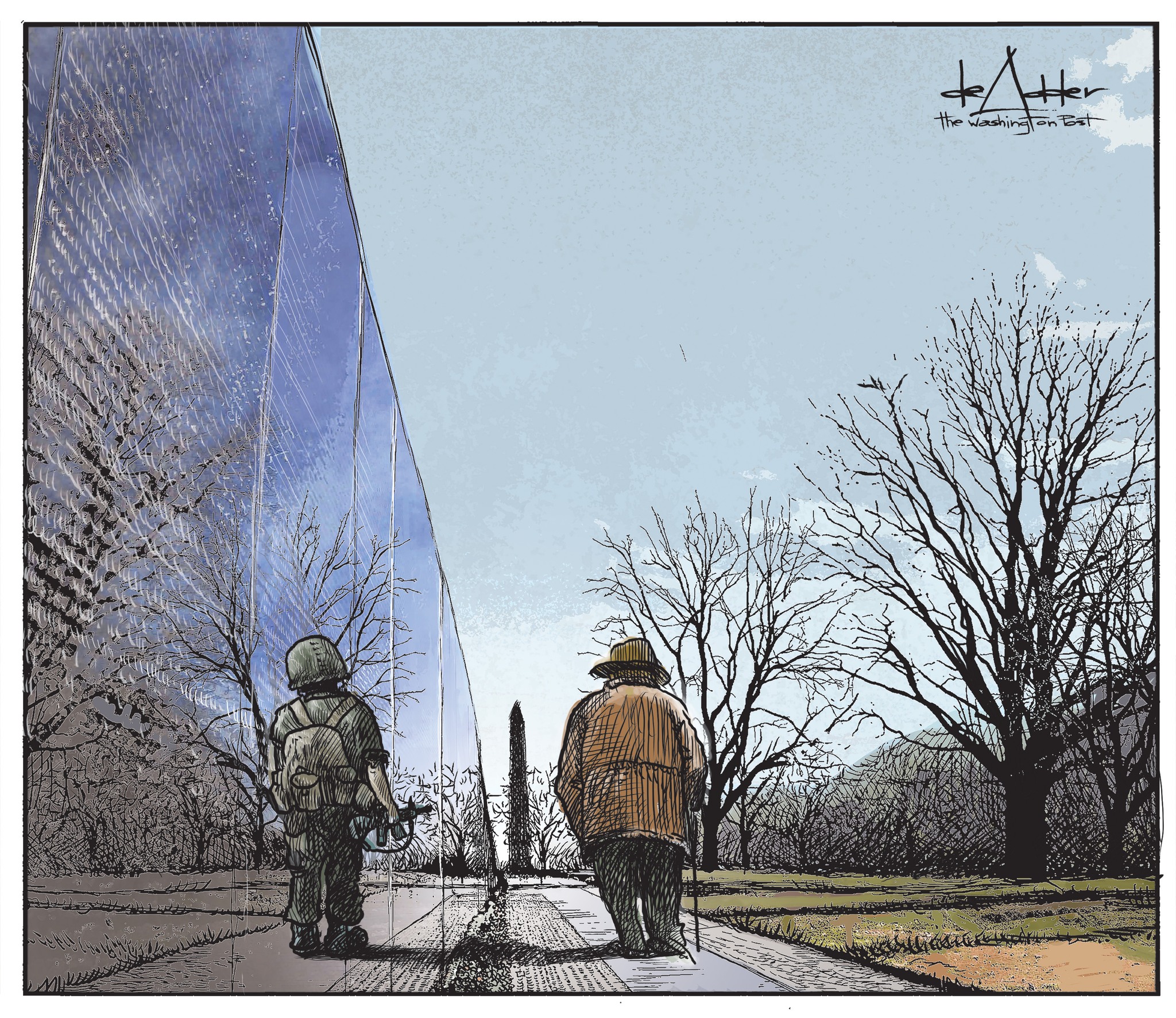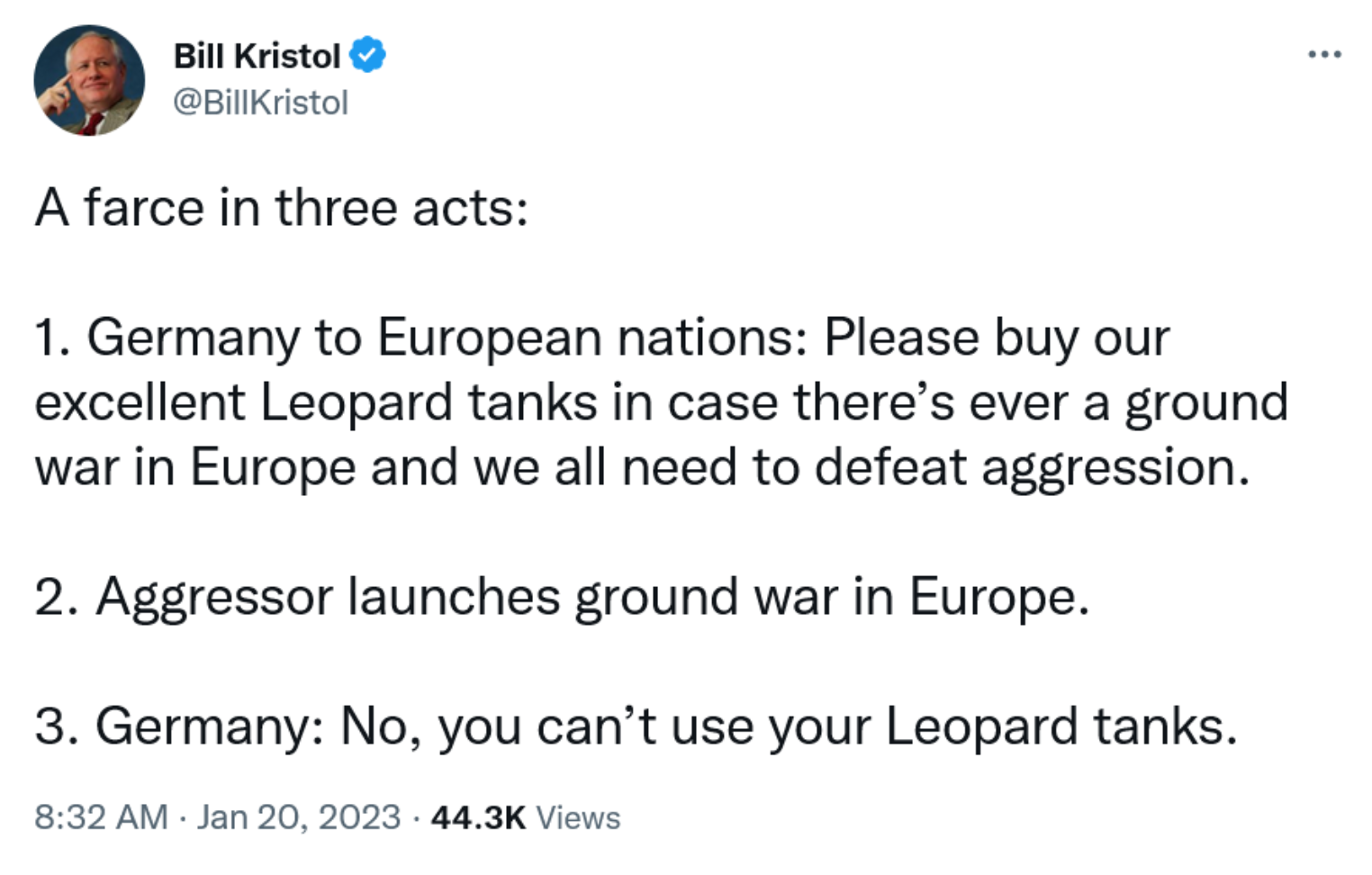The Daily Escape:

Sunset, Rio Grande Bridge, Taos, NM – June 2023 photo by Auggimage
Over the year that Russia has been at war in Ukraine, the west triggered sanctions to isolate Russia from getting access to hard currency. One result is that the sanctions have forced Russian to sell crude at discounted rates. At the cheap prices, India emerged as a major buyer of Russian oil. The discounts have led to India importing more oil from Russia than ever before. Here’s a chart:

According to data from Vortexa, the increase amounts to about 500k barrels/day since November, 2022. Russia now supplies India more crude than Iraq and Saudi Arabia combined. Prior to the Ukraine war, the chart shows that India bought very little oil from Russia. But as the sanctions cut off major Russian banks from much of the West’s payment systems, finding other markets that would trade for oil in currencies other than the dollar became a challenge.
India’s buying Russian crude made sense because India is a major buyer of Russian weapons. Since 2017, Russia has accounted for $8.5 billion of the $18.3 billion New Delhi has spent on weapons imports. Business Insider reports that India has been buying Russian oil using rupees since Moscow has been shut out of the USD-denominated global payments system.
Snapping up discounted Russian crude has also widened India’s substantial trade deficit with Russia. This has left Russian oil companies and banks with billions of rupees in their Indian bank accounts.
Russia is now amassing $1 billion worth of Indian rupees each month and it’s struggling either to use in India or to convert into rubles to repatriate the currency. Bloomberg estimates that the total of Russian assets in built up in India since 2022 equals $147 billion. And it’s not like Russia can send the rupees back home, because India has restrictions on capital outflows by foreigners. So, Russia is looking at $2 to $3 billion more rupees stuck in India every quarter.
Bloomberg quoted Russia’s Foreign Minister Sergei Lavrov during a Shanghai Cooperation Organization meeting in India in May:
“We need to use this money. But…these rupees must be transferred in another currency, and this is being discussed now…”
Nandan Unnikrishnan, a Russia expert at the Observer Research Foundation (ORF) in New Delhi, told DW:
“Russia wants a currency that it can use to buy goods that it requires for its economy… the question is identifying that currency…Russians would be happy to use the yuan,”
That’s because the Russia-China bilateral trade is worth hundreds of billions of dollars. OTOH, New Delhi would not be comfortable allowing trade settlement in the yuan, given the tense relations between India and China due to their border disputes. Reuters news reported that the Indian government had asked banks and businesses to avoid using the yuan to pay for Russian imports.
So Russia has a big problem. They would like to use the proceeds of oil exports to finance the Ukraine war. Putting how big the stranded rupees are in context, Russia spent $68 billion, on defense in 2022, according to Reuters. As Alexander Isakov, Russia economist at Bloomberg Economics says:
“There are no alternative oil importers of India’s caliber on the horizon for Russia, so exporters and banks will gradually accept settlement in rupees…”
Western pundits and economists have talked endlessly about how the sanctions weren’t doing much to close off Russia from the rest of the world. But the sanctions that cut off major Russian banks from most of the West’s payment systems, have created a real challenge to Russia finding ways to get paid for their crude so that they can finance their war in Ukraine.










 Wildflower bloom, Peridot Mesa on the San Carlos Reservation, AZ – March, 2023 photo by
Wildflower bloom, Peridot Mesa on the San Carlos Reservation, AZ – March, 2023 photo by 



